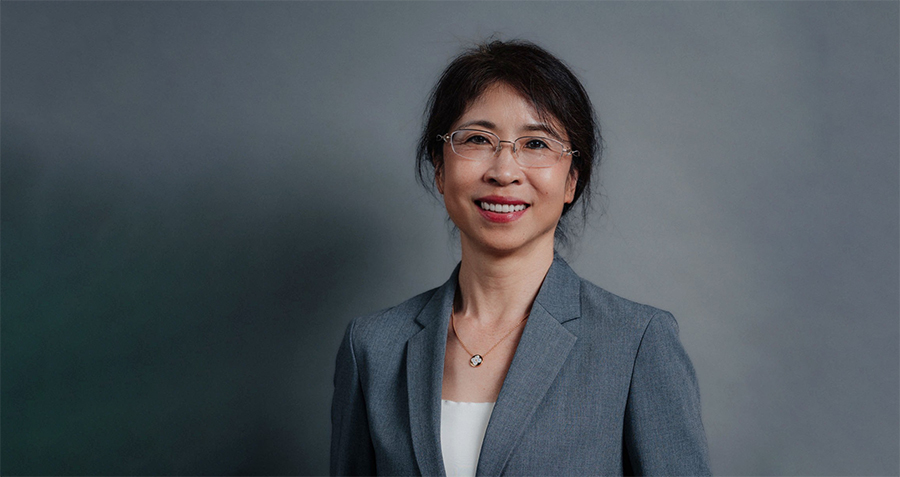As the second-most populous country on Earth, China faces a gargantuan task when it comes to equitable development within its borders. The last two decades in particular have seen massive GDP growth in the country as well as a shift from a low- to middle-income economy. But while the eradication of poverty was officially announced in 2020, there is still a notable rural-urban divide, which, if left alone, would have long-term consequences for the country’s ambitions of escaping the middle-income trap.
In this interview, Professor Scott Rozelle, Helen F. Farnsworth Senior Fellow at Stanford University, discusses the long-term impact of a rural-urban divide on education levels, the impact of China’s hukou registration system and the potentially different outcomes of an industrial versus post-industrial world.
Q. What are the major impacts, both general and economic, of a large rural-urban divide in a country such as China?
A. The biggest consequence of a rural-urban divide is that it really doesn’t allow for the natural large-scale urbanization of countries to occur. And at least over recent decades in the post-industrial world there are no high-income countries where more than 10% of the population lives in a rural area or in agricultural industries.
If you think of Japan, where three quarters of the population lives between Tokyo, Kyoto and Hiroshima, or South Korea, where half to three-quarters live in either Seoul or Busan, the reason that works is that there is a mass conglomeration effect for urbanization. Moving rural people into cities results in higher quality human capital. There are any number of benefits, and there are no high-income countries in the world where this hasn’t happened, but China is lagging very far behind.
One of the issues in China is that there are two definitions of urbanization. In the most liberal definitions, by June of the census year [2020] there were between 60-70% urban people and the rest rural. But if you look at residency permits (hukou) then it’s almost exactly the opposite. The trouble is that those with rural hukou can’t permanently move to cities without changing to an urban hukou, but that requires things like having their land being bought up or them gaining a higher level of education and job than many immigrants typically have.
Looking the other way, there are a number of schemes aimed at improving healthcare and education in rural areas, but the cost is high and the quality is low, and that can also have costs on both the fiscal and GDP sides.
Q. Where do the main discrepancies in China’s rural and urban populations lie?
A. Education is probably the biggest disparity. If you look at the elite universities across the country, such as Peking University and Fudan University, less than 5% of the students have two parents with rural hukou. At the same time, 65% of kids in China have two parents with rural hukou, so there is a clear disparity there.
The other major issue is healthcare. We have a lot of studies, done through sending standardized test patients [using symptoms for diseases without outward symptoms] to rural village clinics or township hospitals, which have shown in many cases that the probability of you being negatively affected by the proposed treatments is higher than the probability of getting better. When you look at urban China, there are obviously still some issues with the services, but generally the healthcare is significantly better that in rural areas, and in some cases, world-class.
A third one is unemployment insurance. There is a lot of discussion about the 20% rate of urban 16-24 year old unemployment, but if you do the math, that works out to around 10-15 million people. Still significant, of course, but in April 2023, of the 600 million rural people in the labor force nearly half of them couldn’t find a job.
The difficulty here is that their hukou is linked to a farm back home, and they are therefore not technically considered unemployed by the state. The farms they have don’t tend to be large, and they can make in a city in three or four weeks what their parents back home make in a year. Rural individuals between 18 to 40 years old that lose their jobs in urban areas should be counted as unemployed (because most do not know how to farm and have never farmed), but are not.
Q. What are the underlying causes of these disparities?
A. The hukou system is behind so much of it. A rural hukou limits schooling opportunities, access to healthcare and it’s harder for kids to go with their parents when the parents get jobs in the cities. This also has any number of longer-term effects on their development and prospects, which has a wider economic impact as well. For example, their chances of going to college are very slim compared to their urban counterparts.
There have been some changes to the hukou system in some parts of China, but mostly these are taking rural and urban hukou inside counties or prefectures and allowing for movement anywhere inside them. This means that many rural families in those areas will move to the county seat, buy or rent an apartment which allows them access to healthcare and their kids to school there. For many reasons, this is a good deal and in the short run there are many positives.
But I worry about the longer run, as the movement of any number of low-income citizens into smaller cities is much less likely to drive industrial development in those areas. What happens when the children grow up? How and where do they get a job?
Q. There are some that argue that these issues will be less relevant in a post-industrial world. To what degree do you agree with that idea?
A. There are some people that argue that I’m too industrial society-oriented, and there absolutely could be major changes to come in the future. But a lot of the post-industrial work will still be technologically-related, and to be able to use that technology and understand that you can use it requires a certain level of education.
China is starting to fill that knowledge/access gap by moving people to the county seats, but it’s unclear how fast that will overcome it. Perhaps the post-industrial jobs will move to where they are, but taking examples of what is already happening, such as rural sellers sending produce directly to consumers on platforms like Pinduoduo, there are still issues. The people who are doing it tend to already have higher education levels, they have the required computer skills, language skills and they are able to do some level of finance and accounting. A large majority of rural individuals are unable to compete in this newly unfolding economy.
Q. To what degree can the private sector play a role in reducing the country’s rural-urban divide?
A. As an economist I’m very much in favor of the private sector taking a large role. Developmentally-speaking, if you look at all of the high-income countries in the world, none of them have large SOEs at the heart of their economies, so there is clearly a route for a larger amount of private sector involvement in closing the rural-urban gap.
Of course, the government needs to provide education and health services, and China still has one of the lowest-educated labor forces in the entire middle-income world, so there is still a lot of need for improvements in education. It starts with early childhood education, from 0-3 really, and then on into higher quality pre-schools and elementary/junior high schools. That is going to take investment and it’s going to take time.
I think there is an opportunity for a shift in investment from things like infrastructure to these services, even if that results in a lower growth rate overall. China growing at 2% for the next 35 years will still double their economic size in not too short a time, and that would still be a rich country. In this meantime, they could make a lot of progress in educating that workforce for their new high-income, high-skill economy.
Q. What are the main negative issues caused by China’s rapid economic development?
A. One of the major issues is that China has gone from being a poor- to middle-income country but the education level of the labor force has not improved at the same rate of growth. This is because, going from poor- to middle-income, you have four sources of growth, you mobilize inputs, marketize, remove inefficiencies and then you grow productivity. But once you get to middle-income, in order to move to high income you only have one major growth source, and that is productivity growth, and you have to remove things like labor intensive industries. This is why there are 85 to 100 countries in the world that have been in the middle-income bracket for the past 70 years. They just can’t escape the middle-income trap.
China is currently going through that process of trying to move from middle-income to high-income, and it’s hard to tell how they can continue to grow with their relatively poorly educated labor force. Of course, we don’t want China to become stuck in the middle-income trap, but to avoid stalling out, I believe China needs to aim for a trajectory where it will escape from the trap slowly and surely. To do that, however, it needs to make sure its economy is ready to be a high-income one, and that requires higher education levels which in turn requires sustained investment into human capital for long periods of time.
Q. What do you see as important factors for the development of China’s economy in the coming years?
A. China has a number of high-quality industries, including electric vehicles and solar power, as well as sectors such as agriculture and textiles, which all tend to be more market-driven than not. But there are a large number of industries that make up an economy and in order for the country to grow at a certain rate, each of those sectors also needs to grow at a commensurate rate.
There are often comparisons made between China’s situation now and that of Japan, where the latter had a small number of the strongest industries in the world, for example electronics, automobiles and chemicals, but failed to grow properly overall for a long period of time. I think China has an opportunity to avoid that, and there is a great opportunity for more market reforms to enable this, while the government oversees industries to avoid things like monopolies, as well as providing public goods and services.
We all want China to succeed. A failing China is both bad for China and for the rest of the global economy.
Interview by Patrick Body
Bio: Scott Rozelle is the Helen F. Farnsworth Senior Fellow and the co-director of Stanford Center on China’s Economy and Institutions in the Freeman Spogli Institute for International Studies and Stanford Institute for Economic Policy Research at Stanford University.



















